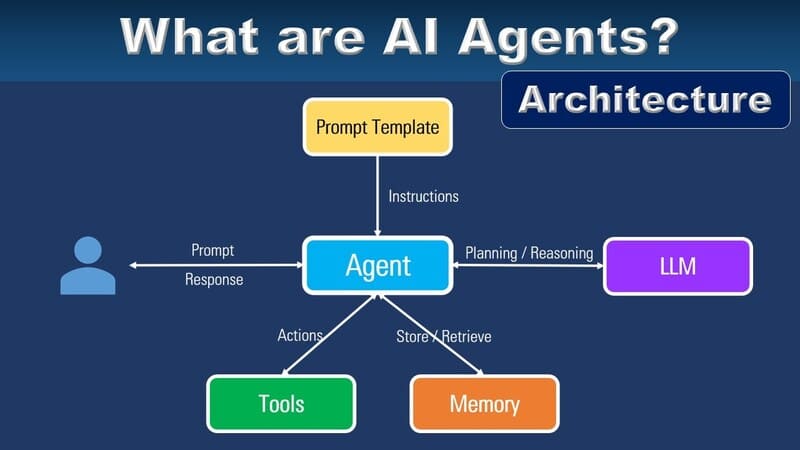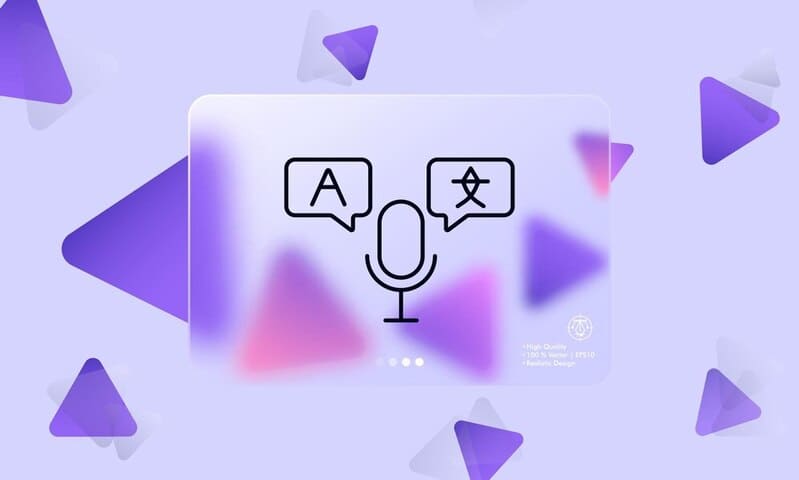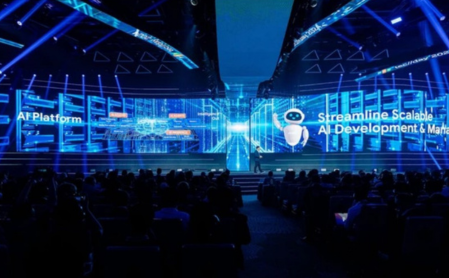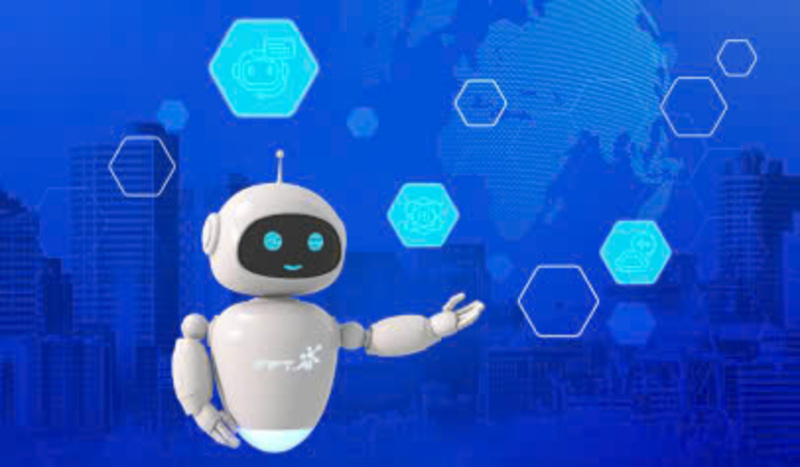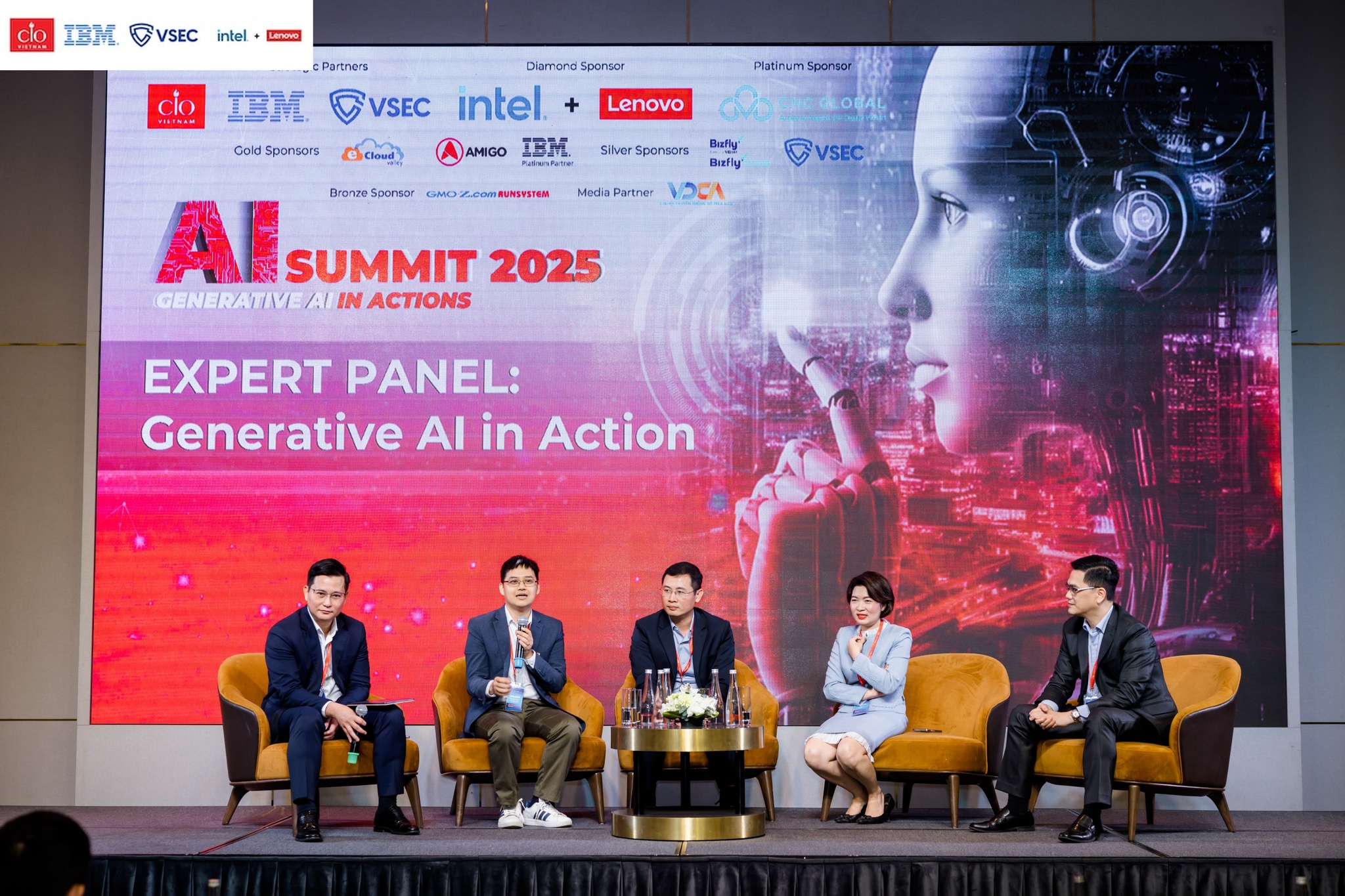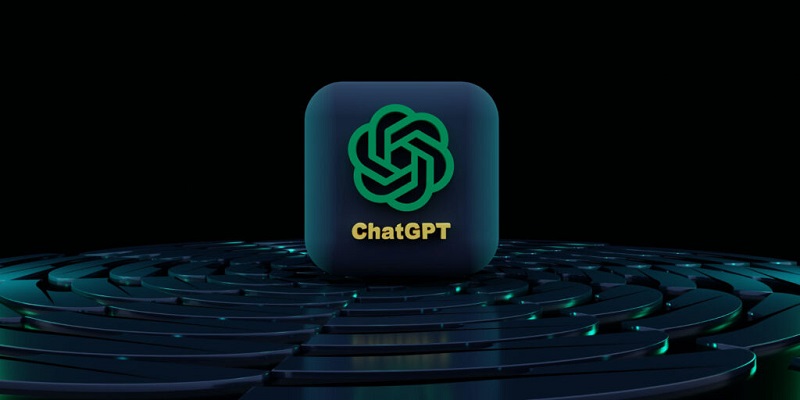Agentic RAG is a method that combines the power of Retrieval-Augmented Generation (RAG) with AI Agents, creating intelligent, proactive, and flexible information retrieval and generation systems. Compared to traditional RAG, Agentic RAG can actively determine when, how, and what needs to be retrieved from various diverse data sources.
In this article, FPT.AI will introduce in detail the nature, operating mechanism, and comprehensive differences of Agentic RAG compared to traditional RAG. Through this, readers will clearly understand the potential as well as the limitations of this technology, thereby making the right decisions when choosing solutions suitable for specific business needs. References are also listed at the end of our articles (in case you would like to look for deeper insights).
What is Agentic RAG?
Agentic RAG is a method that combines the power of Retrieval-Augmented Generation (RAG) with AI Agents to enhance content creation and decision-making capabilities in artificial intelligence systems. While traditional RAG systems supplement large language models with information from external sources according to fixed retrieval strategies, Agentic RAG can actively decide which information is relevant, which information should be prioritized, and how to adjust the content creation process to suit contexts or needs that change in real-time.
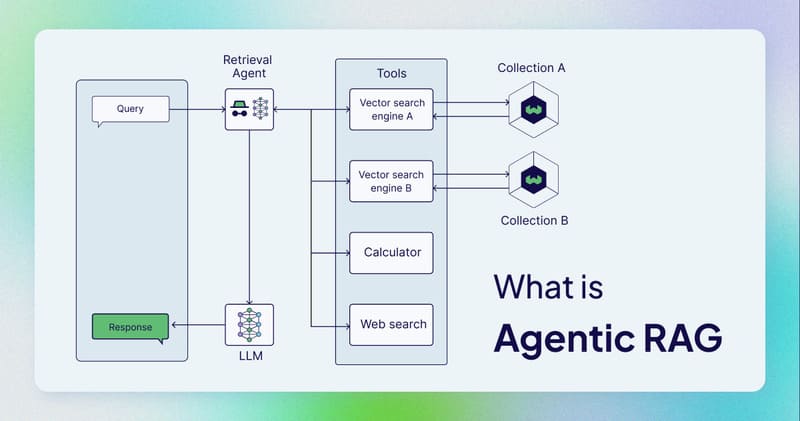
Agentic RAG opens new potential for AI applications that require both accurate information retrieval and complex decision-making. By combining the power of RAG and AI Agents, Agentic RAG not only enhances the quality of retrieved information but also optimizes how that information is used in the content creation process.
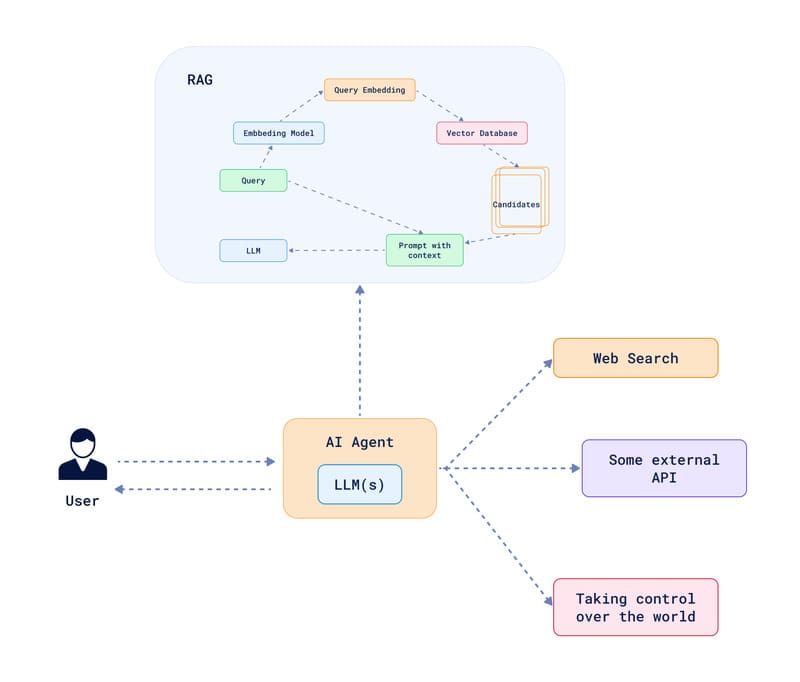
>>> EXPLORE: How to build an AI Agent and train it successfully?
How does Agentic RAG Work?
Unlike traditional RAG, which uses Retrievers and Generators operating separately, Agentic RAG integrates one or more types of AI Agents into the RAG system (Multi-Agent Framework). These AI Agents collaborate to process complex queries together.
For example, an Agentic RAG system can combine multiple information retrieval Agents, each specializing in a specific domain or type of data source. For instance, one Agent might focus on querying External Databases while another searches emails or web results. This task allocation creates a high level of specialization in the information processing.
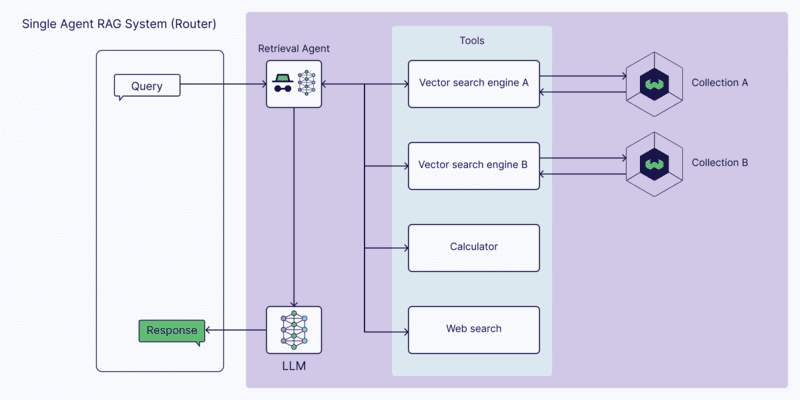
>>> EXPLORE: What is a Multi Agent System (MAS)?
Single-Agent RAG (Router)
An Agentic RAG system can include AI Agent types such as:
- Routing Agents: Routing Agents determine which knowledge sources and tools will be used to process user queries. They process prompts and select the appropriate RAG pipeline to create optimal responses. In single-Agent RAG systems, the Routing Agent will select the data source that needs to be retrieved.
- Query planning Agents: Query planning agents act as task managers in the RAG pipeline. They break complex queries into smaller steps and distribute them to other agents. After receiving results from specialized Agents, Query Planning Agents combine the responses into a comprehensive, complete result. This mechanism, called AI Orchestration, allows the system to efficiently process complex multi-dimensional queries.
- ReAct Agents: ReAct (reasoning and action) is an agent framework that helps create multi-agent systems capable of reasoning and acting step by step. Notably, ReAct Agents can determine the appropriate tool for each specific task. Based on step-by-step results, ReAct agents can flexibly adjust subsequent steps.
- Plan-and-execute Agents: This is an advanced version of ReAct agents that can perform multi-step processes without needing to return to the primary agent. This mechanism helps reduce processing costs and increase system efficiency. Since this Agent must develop a comprehensive plan from the beginning, the task completion rate and result quality are usually higher than other Agent types.
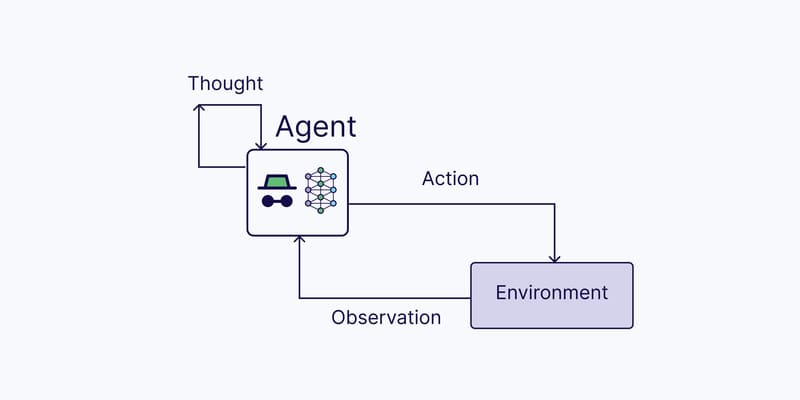
Frameworks that can be found on GitHub such as LangChain, LlamaIndex, and the LangGraph Orchestration Framework help simplify the implementation of Agentic RAG. Using open-source models like Granite™ or Llama-3 also helps reduce costs and increase observability.
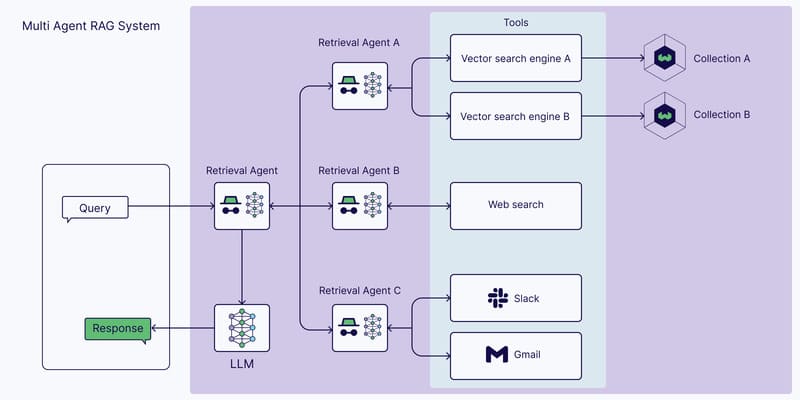
>>> EXPLORE: What is an LLM Agent? How it works, advantages, and disadvantages
What is RAG?
Retrieval Augmented Generation is an artificial intelligence (AI) technique that enhances the performance of large language models (LLMs) by connecting Generative AI models with an External Knowledge Base. Instead of relying solely on available training data, RAG helps AI models access real-time data through APIs and other connections to data sources.

A standard RAG pipeline consists of two main components:
- Information retrieval component (Retriever): Typically an Embedding Model combined with a Vector Database containing data to be retrieved. Retrievers usually search for information relevant to the input query in huge datasets or document repositories.
- Generation component (Generator): Usually an LLM like GPT, BERT, or similar architectures. The Generator processes the query and retrieved documents to create coherent and contextually appropriate responses.
When receiving a natural language query, the Embedding Model converts the query into a Vector Embedding, then retrieves similar data from the Knowledge Base. The AI system combines the retrieved data with the user query to create contextually appropriate responses.
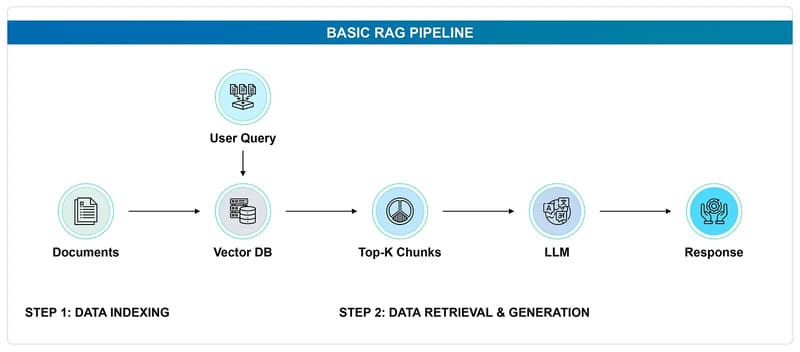
The main advantage of RAG lies in its ability to reference updated information or specialized data that may not have been included in the model’s training phase. This minimizes the hallucination problem, where language models provide information that seems reasonable but is inaccurate, while ensuring higher factual accuracy. RAG allows LLMs to operate more accurately in specialized contexts without needing fine-tuning.
RAG is widely applied in fields requiring accuracy and contextual relevance in content creation such as:
- Customer support: RAG provides accurate responses by retrieving relevant information from product manuals, FAQs, or customer databases.
- Medicine and research: RAG enhances language models to create deep insights by retrieving and referencing academic articles or research datasets.
- AI Chatbots: Specialized chatbots are significantly improved by RAG, ensuring that responses are informed by a broader dataset than what was used in the initial training process.
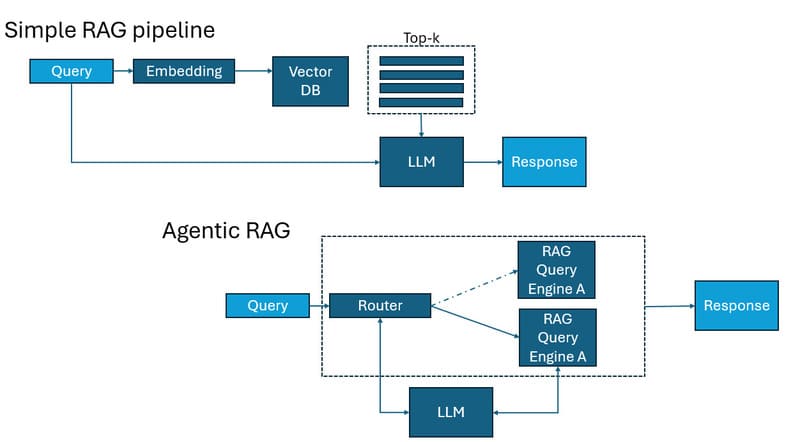
>>> EXPLORE: RPA vs AI Agents: Is RPA Still Relevant in the Age of AI?
What are AI Agents?
AI Agents are types of AI that can interact with the environment, process input information, and perform a sequence of actions based on specified inputs or goals without human intervention. Most current Agents are large language models (LLMs) with Function Calling capabilities, meaning they can call tools to perform tasks.
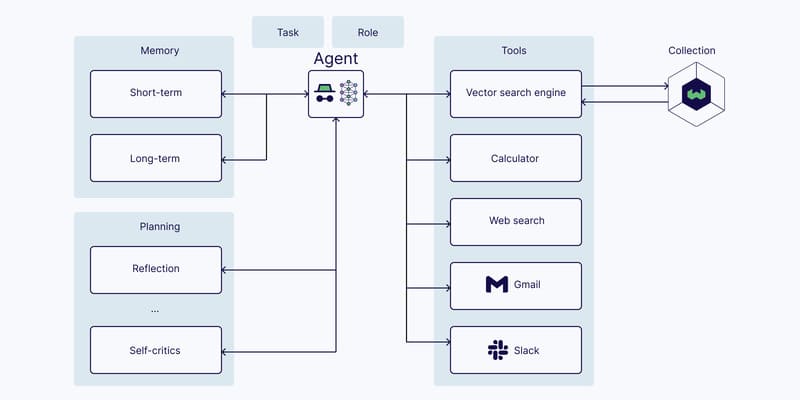
The main roles of Agents are to automate tasks, optimize processes, and make intelligent decisions in dynamic environments, particularly suitable for complex decision-making tasks. Theoretically, AI Agents are LLMs with three prominent characteristics:
- Possessing both short-term and long-term memory, able to reference previous tasks to plan and execute complex subsequent tasks.
- Having the ability to route queries, plan step by step, and make decisions. AI Agents have memorization capabilities to retain information and outline actions appropriate for complex queries.
- Having the ability to call tools through APIs. More advanced Agents can even actively choose appropriate tools to optimize the user response process.
The Agent workflow (Agentic Workflow) can include a single AI Agent or a system of multiple Agents working together. Agents can vary in complexity, from simple rule-based systems to complex models leveraging Deep Learning.
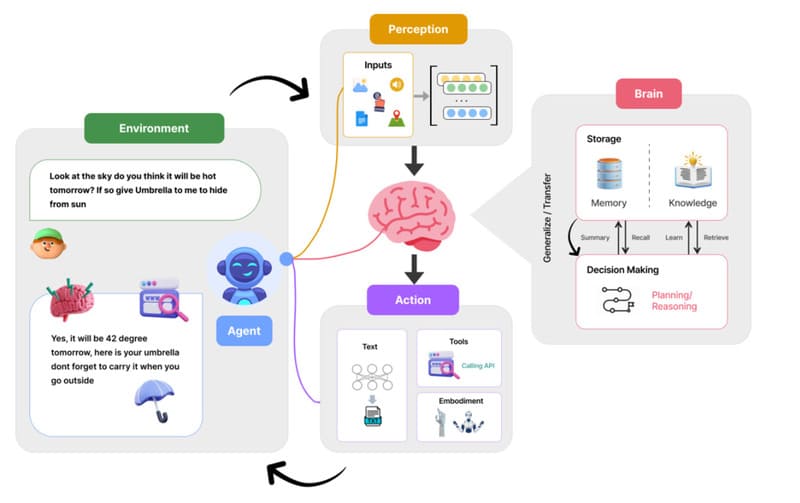
Based on characteristics and functions, AI Agents can be classified into several groups. Reactive Agents operate based on the current state of the environment, following predetermined rules or responses without storing or using past experiences.
Cognitive Agents are more advanced with the ability to store past experiences, analyze patterns, and make decisions based on memory, often used in systems requiring learning from previous interactions. Collaborative Agents interact with other Agents or systems to achieve common goals, commonly found in multi-Agent systems where multiple Agents collaborate, share information, or coordinate actions.
In terms of architecture and communication, Agents rely on various architectures, including decision-making models, Neural Networks, and rule-based systems. Communication between Agents is typically conducted through protocols such as message passing, event triggering, or interactions based on complex networks, particularly important in distributed systems.
Agents can be organized according to centralized models, where all decisions are made by a single controlling entity, or distributed, where each Agent operates autonomously but still contributes to a larger goal.
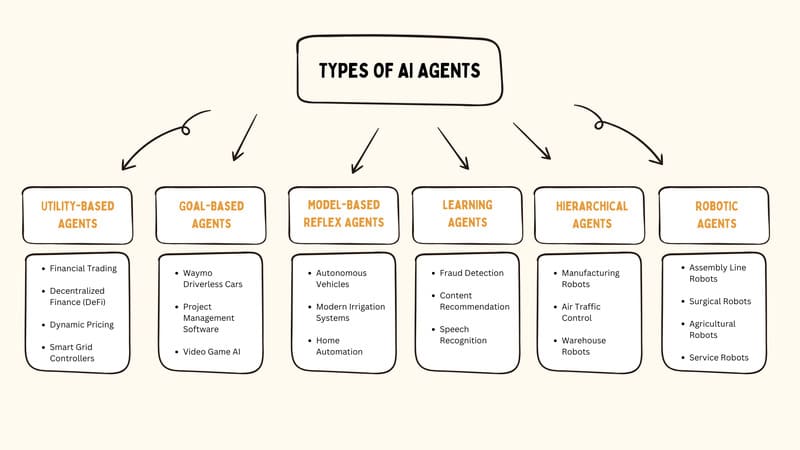
>>> EXPLORE: Applications of AI Agents in Personalized Marketing
Differences between Agentic RAG and Traditional RAG
See the detailed comparison table between Agentic RAG and traditional RAG:
| Criteria | Traditional RAG | Agentic RAG |
|---|---|---|
| Operating mechanism | Passive information retrieval, only when requested | Adds a decision-making layer through autonomous Agents, actively decides when, how, and what needs to be retrieved |
| Flexibility | Connects LLM with a single dataset | Can retrieve data from multiple External Knowledge Bases and use external tools |
| Adaptability | Reactive data retrieval tool, does not adapt to changing contexts, requires prompt engineering to achieve optimal results | Solves problems intelligently and flexibly, Agents coordinate and check each other |
| Accuracy | Does not self-verify or optimize results | Can iterate the process to optimize results over time |
| Scalability | Limited due to connection with a single data source | Higher thanks to a network of Agents working together, accessing multiple data sources, and using Tool-Calling |
| Multimodality | Usually limited to text processing | Leverages Multimodal LLMs to process diverse data such as images and audio |
| Cost | Lower due to using fewer tokens | Higher because it needs more Agents and tokens |
| Latency | Lower | Higher because LLMs need time to generate responses |
| Reliability | Depends on the quality of source data | May fail depending on complexity and type of Agent used |
Thus, the most fundamental difference between Agentic RAG and traditional RAG lies in proactivity and decision-making ability. Traditional RAG operates as a passive tool, only retrieving information when requested and based on a rigid process established in advance. In contrast, Agentic RAG integrates intelligent Agents capable of actively deciding the process of searching, processing, and synthesizing information.
While traditional RAG is like an employee strictly following given instructions, Agentic RAG operates like a team of autonomous experts, not only performing assigned tasks but also having the ability to store and reference previous query sets, contexts, and results (through Semantic Caching), analyze problems, coordinate with each other, and provide creative solutions.

However, Agentic RAG is not always better than traditional RAG. Having multiple AI Agents means higher costs, as more tokens are needed. Additionally, LLMs can create latency because they take time to generate responses. Moreover, Agentic RAG still fails in complex tasks, competing for resources, leading to conflicts. And even the best RAG systems cannot completely eliminate the possibility of “hallucination.”
Therefore, businesses should only choose Agentic RAG when they need to solve complex problems requiring multiple data sources, need high flexibility in searching and processing information, or want systems capable of self-improving accuracy over time. With limited budgets, needing quick response solutions with simple tasks and clearly defined data sources, traditional RAG remains an effective and cost-efficient choice.
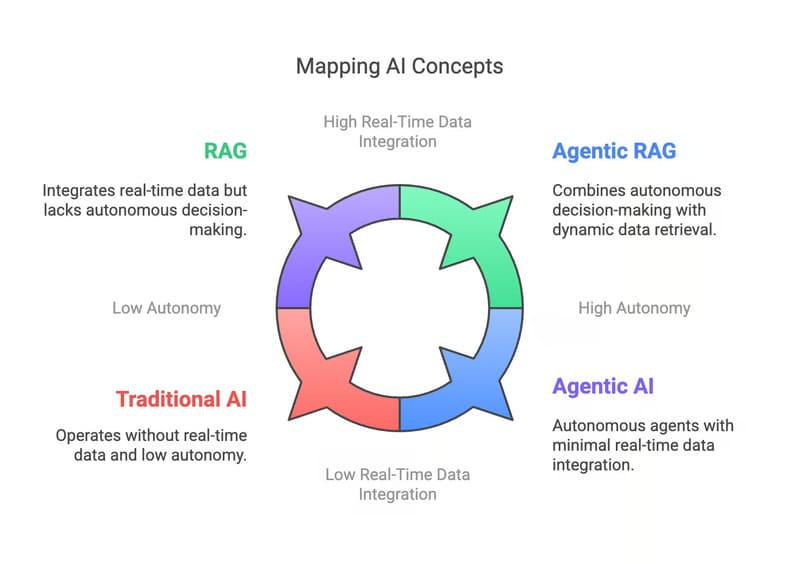
>>> EXPLORE: What is Agentic AI? The differences between GenAI and Agentic AI
Notable Applications of Agentic RAG
Agentic RAG can be used in most applications of traditional RAG, but due to higher computational demands, it is more suitable in situations requiring queries across multiple data sources. Some applications include:
- Real-time question answering and decision support: In situations requiring rapid data analysis such as stock market analysis or medical diagnosis, businesses deploy AI chatbots, virtual assistants, or FAQ systems using RAG to provide accurate, updated information to employees and customers.
- Automated support: With the ability to retrieve content relevant to ongoing conversations and automate customer service with personalized and contextually appropriate content, businesses can use Agentic RAG to handle simple support requests and forward more complex issues to human staff.
- Data management: RAG systems help quickly retrieve information in internal databases, reducing employees’ manual search needs.
- Multi-Agent collaboration systems: Agentic RAG shows great potential in distributed AI systems where multiple Agents need to coordinate work on large datasets or process complex queries, creating an intelligent network with superior information processing capabilities.
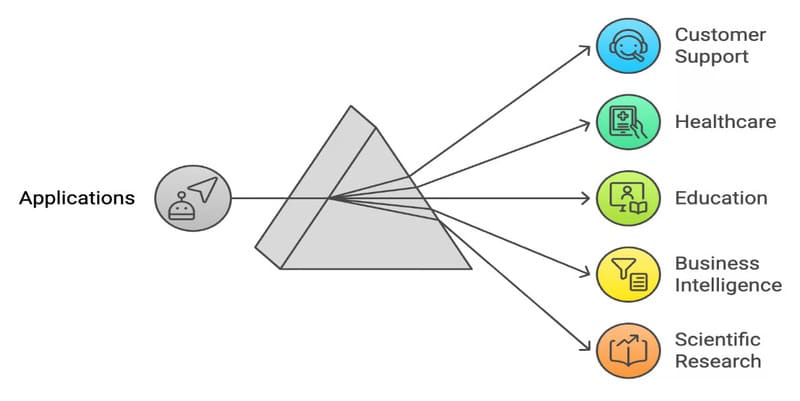
In conclusion, Agentic RAG marks a significant advancement in artificial intelligence by combining the power of retrieval-generation and intelligent multi-Agent systems. The choice between Agentic RAG and traditional RAG needs to be carefully considered based on specific requirements, available resources, and the complexity of the task.
In the future, with the continuous development of large language models and Agent technology, Agentic RAG promises to become increasingly refined, overcoming current limitations and expanding its application scope in various fields of life and business.
References:
- Weaviate. (n.d.). What is Agentic RAG. Retrieved April 20, 2025, from https://weaviate.io/blog/what-is-agentic-rag
- IBM. (n.d.). What is Agentic RAG? Retrieved April 20, 2025, from https://www.ibm.com/think/topics/agentic-rag
- LeewayHertz. (n.d.). Agentic RAG: What it is, its types, applications and implementation. Retrieved April 20, 2025, from https://www.leewayhertz.com/agentic-rag/
>>> EXPLORE:








